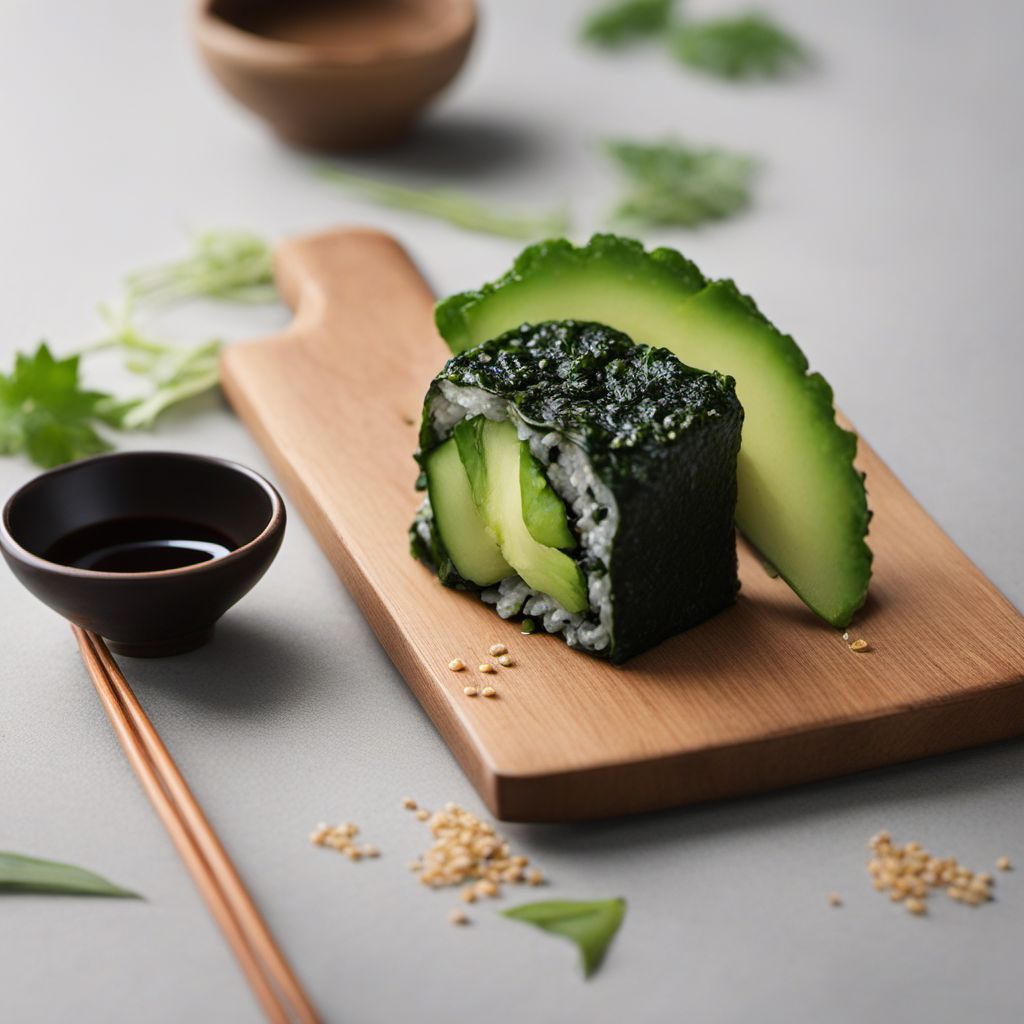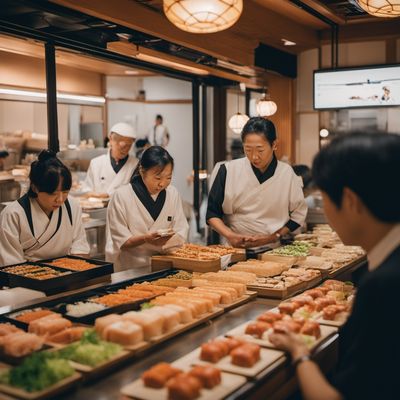
Recipe
Wakame Gunkan Maki with a Twist
Ocean Delight Gunkan Maki: A Modern Twist on a Japanese Classic
4.6 out of 5
Indulge in the flavors of the sea with this modern twist on the traditional Japanese dish, Wakame Gunkan Maki. This recipe combines the umami-rich flavors of wakame seaweed with a variety of fresh ingredients, creating a delightful and visually appealing sushi roll.
Metadata
Preparation time
20 minutes
Cooking time
10 minutes
Total time
30 minutes
Yields
4 servings
Preparation difficulty
Easy
Suitable for
Pescatarian, Vegetarian (if using vegetarian sushi rice), Gluten-free (if using gluten-free soy sauce), Dairy-free, Vegan (if using vegan sushi rice)
Allergens
Sesame seeds, Soy
Not suitable for
Nut-free (due to sesame seeds), Soy-free (due to soy sauce)
Ingredients
-
10 sheets of wakame seaweed 10 sheets of wakame seaweed
-
2 cups (400g) sushi rice 2 cups (400g) sushi rice
-
1 avocado, thinly sliced 1 avocado, thinly sliced
-
1 cucumber, julienned 1 cucumber, julienned
-
2 tablespoons pickled ginger 2 tablespoons pickled ginger
-
Soy sauce, for drizzling Soy sauce, for drizzling
-
Sesame seeds, for garnish Sesame seeds, for garnish
Nutrition
- Calories (kcal / KJ): 250 kcal / 1046 KJ
- Fat (total, saturated): 5g, 1g
- Carbohydrates (total, sugars): 45g, 2g
- Protein: 5g
- Fiber: 3g
- Salt: 1g
Preparation
-
1.Cook the sushi rice according to package instructions and let it cool.
-
2.Place a sheet of wakame seaweed on a clean surface.
-
3.Wet your hands with water to prevent sticking and take a handful of sushi rice.
-
4.Gently press the rice onto the wakame seaweed, leaving a small border at the top.
-
5.Place a few slices of avocado, cucumber, and a small amount of pickled ginger in the center of the rice.
-
6.Fold the sides of the seaweed inward to create a boat shape, ensuring the filling is secure.
-
7.Repeat the process with the remaining ingredients.
-
8.Drizzle the rolls with soy sauce and sprinkle sesame seeds on top.
-
9.Serve the Wakame Gunkan Maki immediately and enjoy!
Treat your ingredients with care...
- Wakame seaweed — Rinse the seaweed thoroughly before using to remove any excess saltiness.
- Sushi rice — Cook the rice with slightly less water than usual to achieve a stickier texture, ideal for sushi rolls.
- Avocado — Choose ripe but firm avocados to ensure easy slicing and prevent mushiness.
- Pickled ginger — Pat dry the pickled ginger before using to remove excess moisture and prevent the roll from becoming soggy.
- Sesame seeds — Toast the sesame seeds in a dry pan over medium heat for a few minutes until fragrant before using for enhanced flavor.
Tips & Tricks
- Wetting your hands with water while handling the sushi rice will prevent it from sticking to your hands.
- Use a sharp knife to slice the rolls for clean and neat cuts.
- Experiment with different fillings such as thinly sliced fish or marinated tofu for added variety.
- Serve the Wakame Gunkan Maki with wasabi and soy sauce on the side for dipping.
- For a spicy kick, add a small amount of sriracha or chili sauce to the filling.
Serving advice
Serve the Wakame Gunkan Maki as an appetizer or as part of a sushi platter. Arrange the rolls on a beautiful plate or sushi board and garnish with additional pickled ginger and a sprinkle of sesame seeds for an elegant presentation.
Presentation advice
To enhance the presentation, arrange the Wakame Gunkan Maki in a circular pattern on a rectangular plate, creating a visually appealing display. Garnish with microgreens or edible flowers for an extra touch of elegance.
More recipes...
For Wakame gunkan maki
More Japanese cuisine dishes » Browse all

Ikayaki
Grilled Squid with Soy Sauce
Ikayaki, or grilled squid, is a popular Japanese street food that is enjoyed all over Japan. It is a simple yet delicious dish that is perfect for...

Niboshi dashi
Niboshi dashi is a Japanese soup stock made from dried baby sardines. It is a key ingredient in many Japanese dishes, including miso soup and udon...

Inarizushi
Inarizushi is a type of sushi that is made by stuffing seasoned sushi rice into a pouch made of fried tofu. It is a popular dish in Japan and is...






